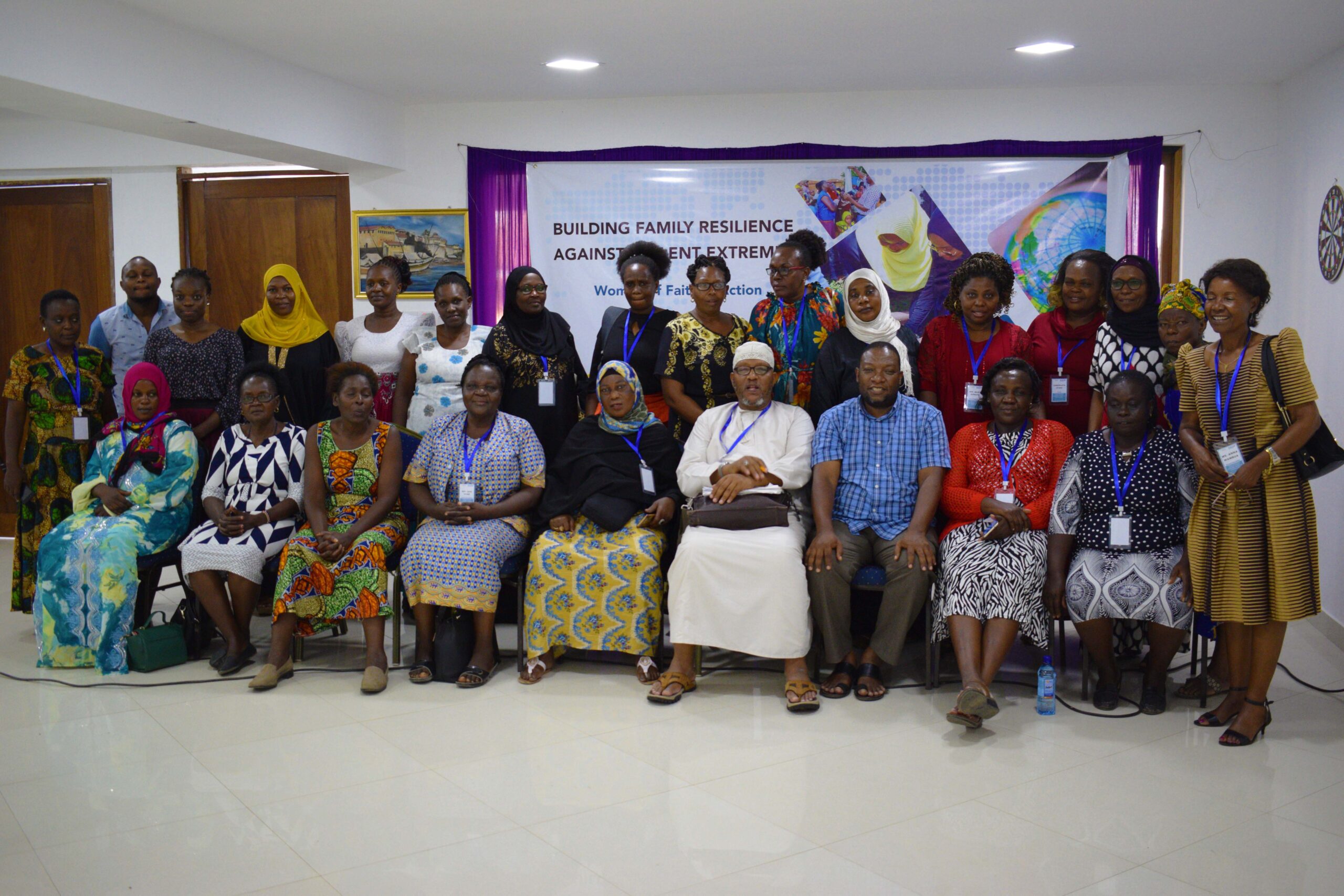
Under the Family Resilience Project; Arigatou International – Nairobi in partnership with GCERF conducted 2 women trainings on peacebuilding on 22nd – 24th November 2019 in Kamukunji, Nairobi and 2nd – 4th December in Nyali, Mombasa. The PVE training workshops brought together a total of 40 women teachers and faith leaders from Kamukunji and Bombolulu constituencies of Kenya. The forum took the form of training sessions, women-led discussion groups, reflective sessions, plenary presentations, and a practicum on designing an intervention to prevent and counter violent extremism (P/CVE).
The forums used an interfaith approach that aimed to address both the structural push factors and other factors associated with the individual person (psychological, interpersonal and ideological), tackling the topics of context of violent extremism in the region, drivers and indicators of radicalization and recruitment to violence; narratives and counter narratives, peace building perspective, stakeholder engagement in countering violent extremism and radicalization, gender dynamics in violent extremism and the role of women in peacebuilding.
At the end of the forums, participants and partners developed concrete action plans and made commitment towards sustaining the process and conversation of faith that has been initiated during the forum discussions. Based on the discussions, participants made the following recommendations and comments towards addressing the challenges of radicalization into violent extremism;
Reflections of the Trainings
- Interreligious dialogue needs to be moved to the next level which involves community action. When religious actors collaborate on issues of common concern they can solve difficult problems, build lasting relationships, strengthen social cohesion and advance peace.
- Attention should be given to the gender specific drivers of radicalization into violent extremism.
- Working with the soft approach – wing of the government is strategic in CVE.
- Knowledge of existing legal and policy frame works on CVE is critical.
- Policies and measures to counter violent extremism among youth should never be discriminatory, in their design or implementation, against any individuals based on religious, racial or ethnic characteristics.
- Issues of discrimination, exclusion and marginalization fuel radicalization into violent extremism.
- The need for credible alternatives to violent extremism that foster feelings of belonging to society, providing access to social services as well as employment opportunities to young people and enabling their active participation in public life including through civic and democratic engagement are key to CVE.
- Young people need safe spaces in which they can proactively raise their concerns and react to events related to violent extremism and terrorism.
- Develop and disseminate locally tailored counter-narratives and promote alternative and role models.
- Employment opportunities and psychological support should be provided to vulnerable individuals;
- There is need to work consistently and closely with youth influencers, who may act as messengers, change-makers, or inspiration for their peers.
- There is a need for a community of practice/networks of young activists that are trained in advocacy for policy and social change. This would include online campaigning against intolerance and discrimination and developing counter narratives – linking online and offline initiatives to maximize impact.
- Similar training should be facilitated for youth in ‘at-risk’ populations.
- The workshop organizers should accompany the participants and monitor the implementation of their action plans.

